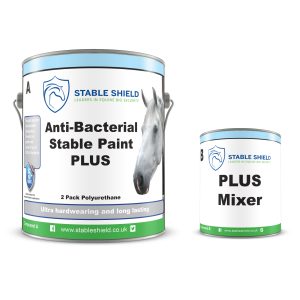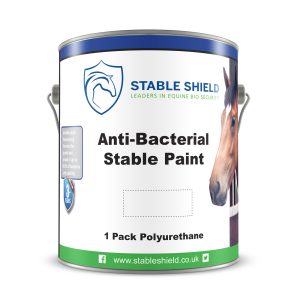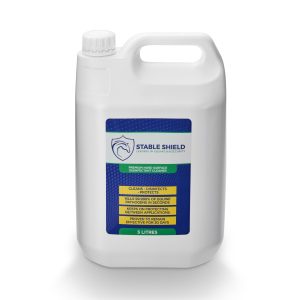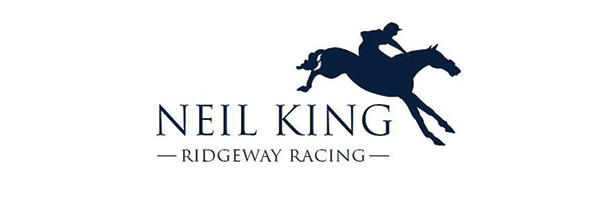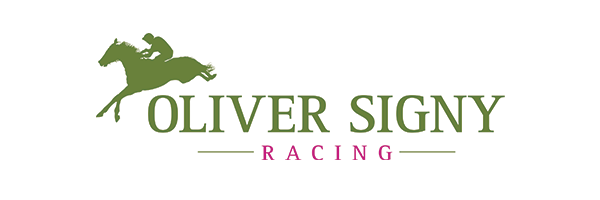The science and testing behind our products
The science and testing behind our products

This antimicrobial efficacy is achieved via our premium coatings in which ECHA/BPR approved biocides are combined. These proprietary formulations combine organic and anorganic biocides to ensure the efficacy to the relevant spectrum of microorganisms. The biocides are non-toxic and non-leaching from the coatings and all coatings are water based.
The International Standard ISO 22196 and the TNO Seed Layer test are the recognised methods of evaluating the efficacy of antibacterial coatings on surfaces.
The ISO method is designed to quantitatively test the ability of antimicrobial coated surfaces to inhibit the growth of micro-organisms or eliminate them over a 24 hour period of contact. The ISO method testing of Stable Shield coatings is carried out on Staphylococcus aureus bacterial strains- ATCC 6538P and Escherichia coli- ATCC 8739, as well as other bacterial strains.
The TNO Seed Layer method is an agar diffusion type method to qualitatively determine the antimicrobial performance of the Stable Shield coatings. Strains of six bacterial species (Pseudomonas aeruginosa, Escherichia coli, Salmonella typhimurium, Staphyloccous aureus, Listeria moncytogenes
and Bacillus subtilis), two yeast species (Saccaromyces cerevisiae and Candida albicans) and two mold species (Aspergillus niger and Trichoderma harzianum) are eliminated with Stable Shield.
ISO and TNO Test Results
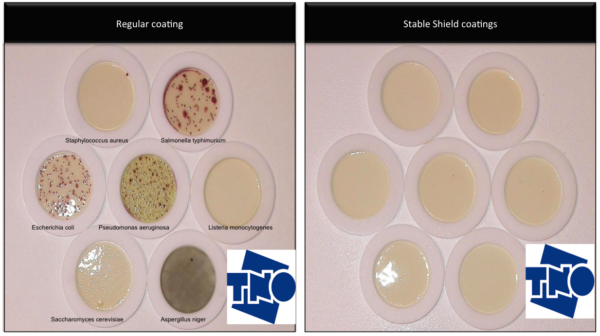
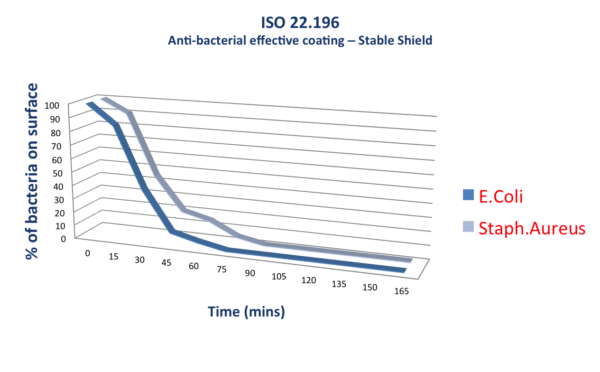
The length of time that these micro-organisms will live in a stable environment is very much dependent on conditions. If stables are not damp proofed or are covered in grime i.e. faeces, bird faeces, dirt, organic matter etc the length of time the organisms survive can vary greatly. Different substrates can also be a contributing factor to these organism’s life span. That said if stables are well ventilated, disinfected regularly, painted with anti- bacterial/fungal paints the survival rate of pathogens is greatly diminished.
Please visit our Best Practices page for advice.
Streptococcus Equi or Zooepidemicus
Strep Equi causes Strangles. It is a highly contagious upper respiratory infection in horses. It causes severe nasal discharge and acute swelling with subsequent abscess formation in the lymph glands. It is particularly ugly and more common than people realise. It spreads by contact with an infected horse, in the air, by humans or on surfaces. It will live for 2 days on clean glass and for numbers of weeks on mucus, faeces, biofilms of grime etc when conditions are favourable. Strep zooepidemicus causes respiratory infections but is more problematic in causing wound infections leading in some cases to septicemia.
Clostridium Botulinum and Clostridium difficile
Both anaerobic bacteria which thrive where there is a lack of oxygen. It’s a spore former so can survive outside the animal for weeks in the spore form. Spreads mainly by contact but also can be airborne. Both organisms cause severe enteric or gut infections leading to gasenteritis (scour).
Salmonella typhimurium
This is an enteric bacteria. Salmonellosis is one of the most commonly diagnosed infectious causes of diarrhea in adult horses. Infection can occur via contamination of the environment, feed, or water or by contact with animals actively shedding the bacteria. Again it can live in certain conditions for weeks.
MRSA
A resistant staph aureus bacteria. Under some conditions, colonized horses can develop an MRSA infection, and can transmit MRSA to other horses and to people, leading to a wide range of infections. Most common in the general equine population are skin and soft-tissue infections (including wound and surgical-site infections) and joint infections. Lives in faeces for long periods of time.
Rhodococcus equi
A bacteria which thrives in dry soil or a dusty environment. Mainly causes severe respiratory infection in foals. It can cause respiratory problems in older immune compromised horses. It is difficult to kill. It is quite resistant to sunlight and not all disinfectants can eradicate it. It is spread in the air.
Aspergillus
There are three main types of this fungus: Flavus, Niger and Fumigatus. Asp Flavus is associated with contaminated poorly dried grain and is the least problematic and pathogenic form of the three mentioned. Asp fumigatus is the most pathogenic and causes ‘farmers lung’ in humans. Both Fumigatus and Niger cause recurrent airway obstruction, EIPH or bleeding and immune suppression in racehorses. Horses who are susceptible to exposure can quickly develop lung inflammation when in contact. It can cause them to stop in races where their lungs swell up and they choke. The fungus is associated with dampness and poor hygiene. Like all fungus it survives by forming spores and survive indefinitely under certain conditions. Infection in the horse is acquired by inhalation or ingestion of the spores.
Cladosprium
Like Aspergillus it’s a spore forming fungi which causes respiratory problems. The spores contaminate via ingestion or the air.
Trichophyton (Ringworm)
Trichophyton causes ringworm in horses. It’s a spore forming fungus. It spreads both by contact and in the air. Can invade the horses after exercise through open pores in the skin. Its spores can survive indefinitely in timber.
